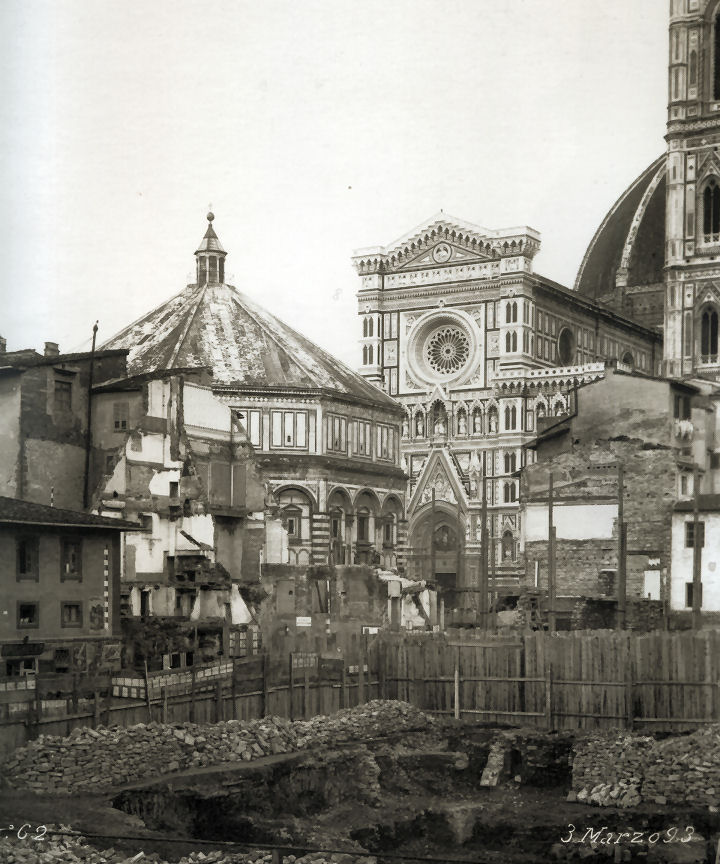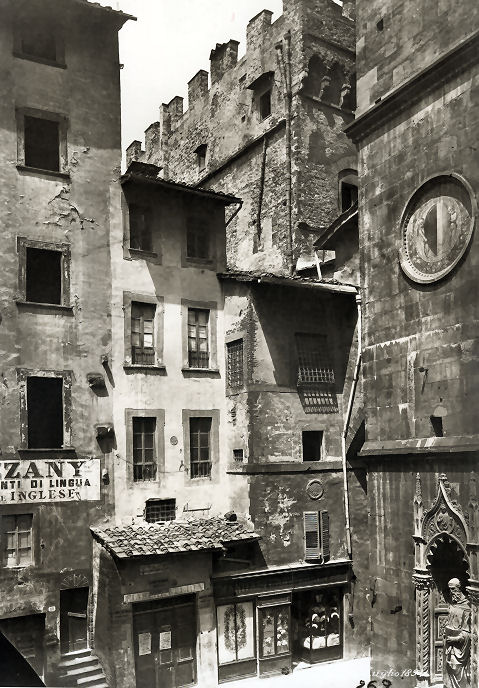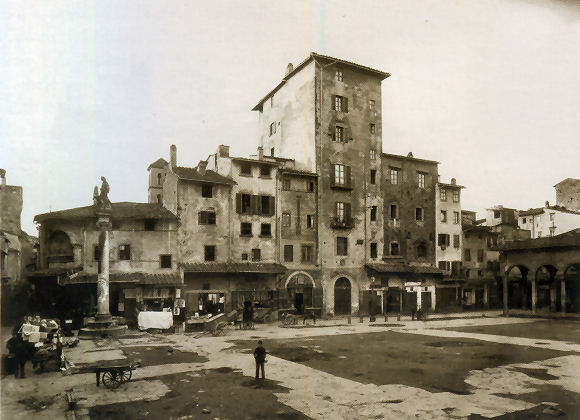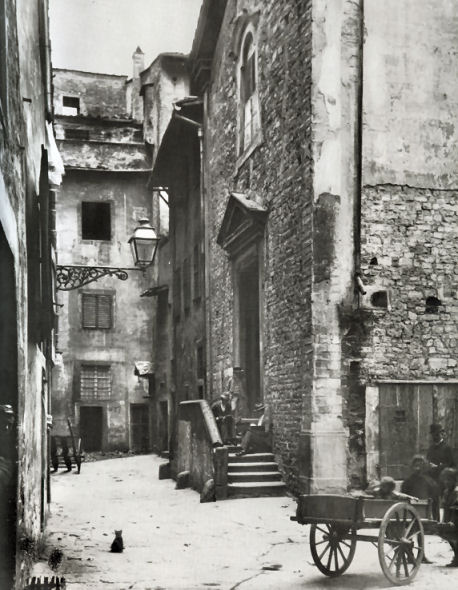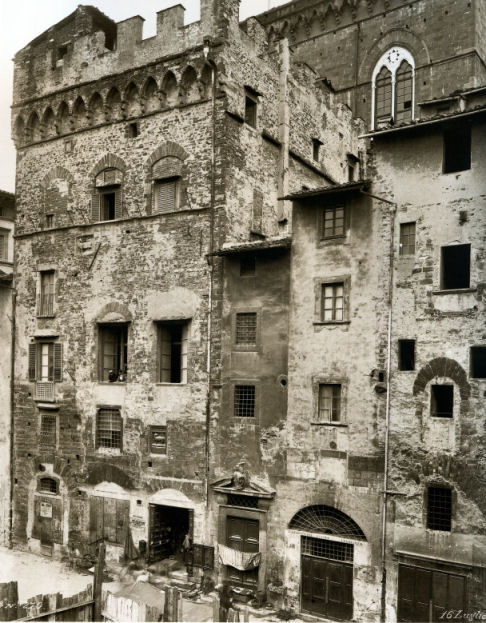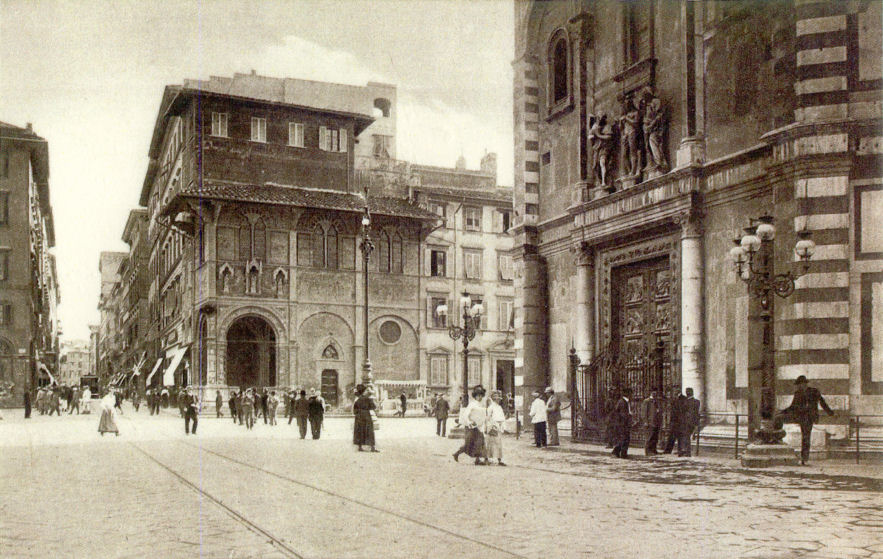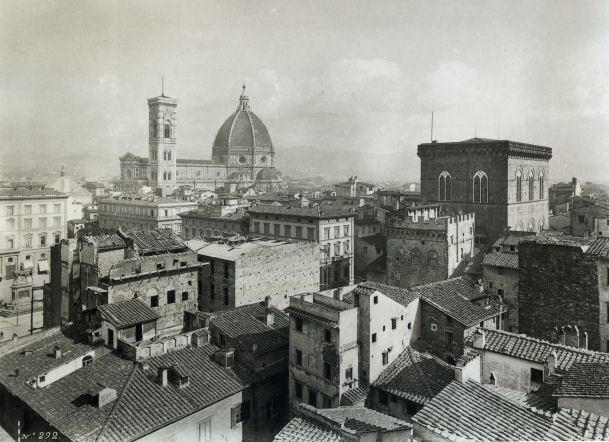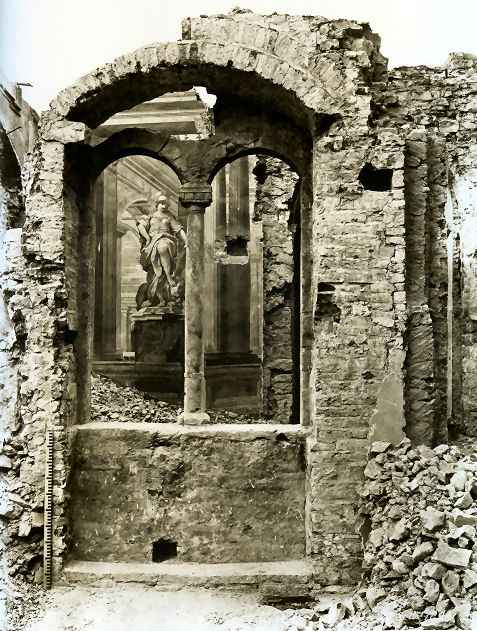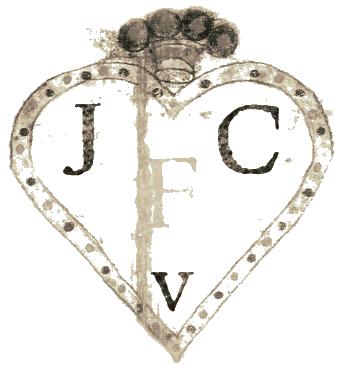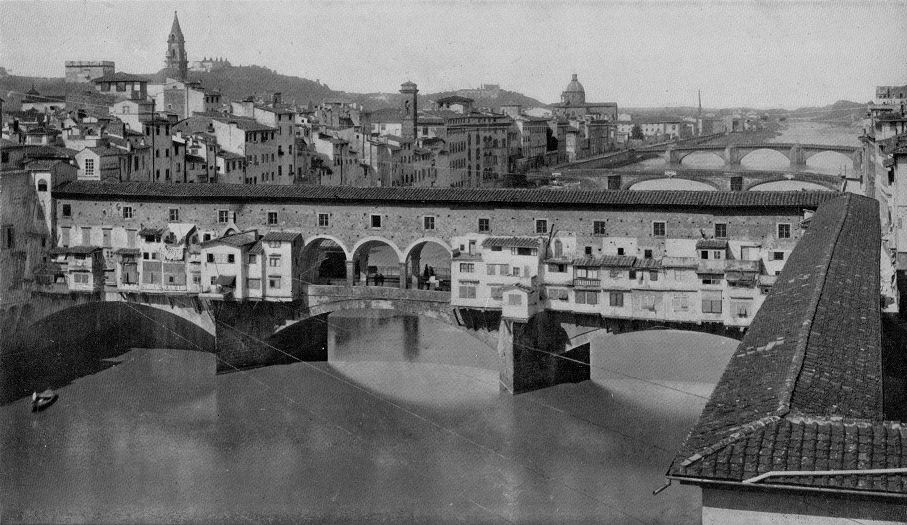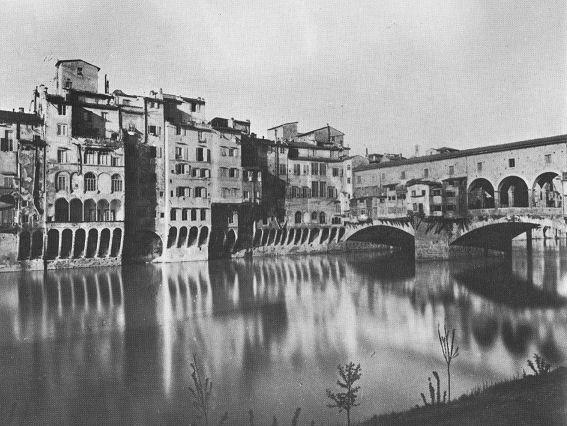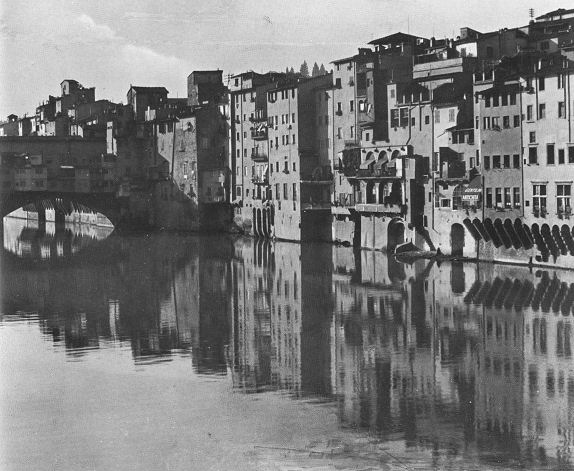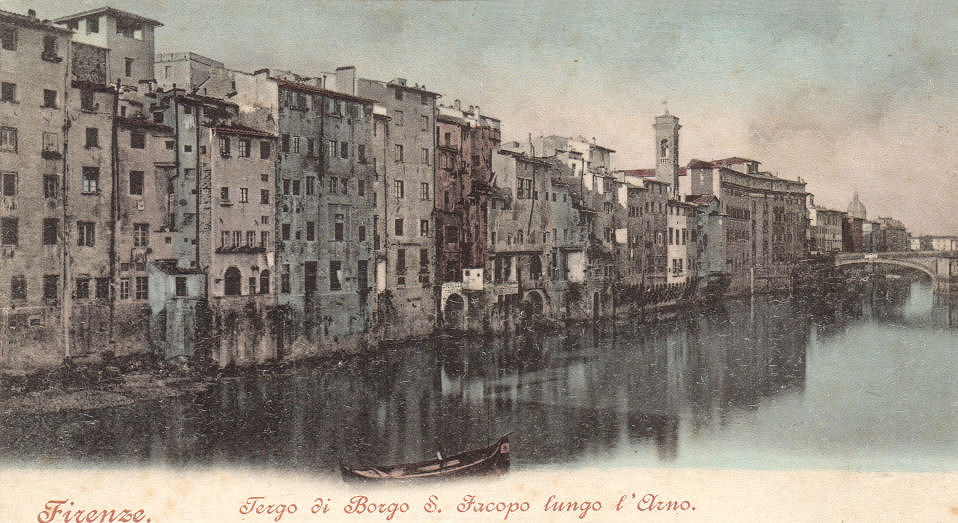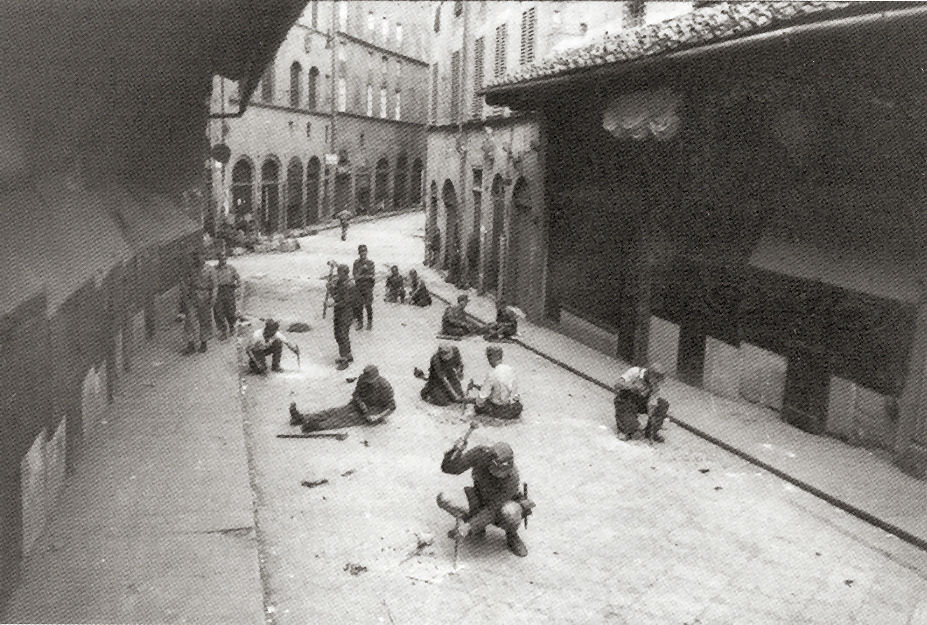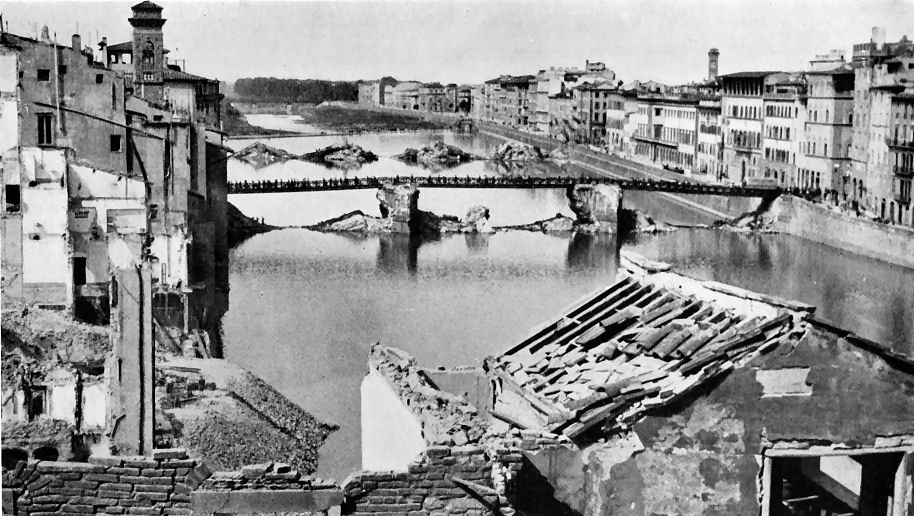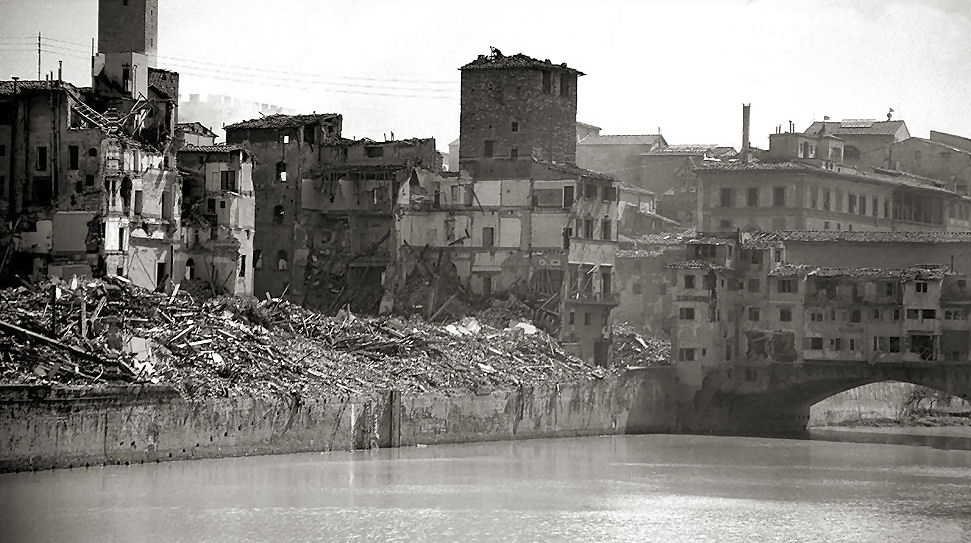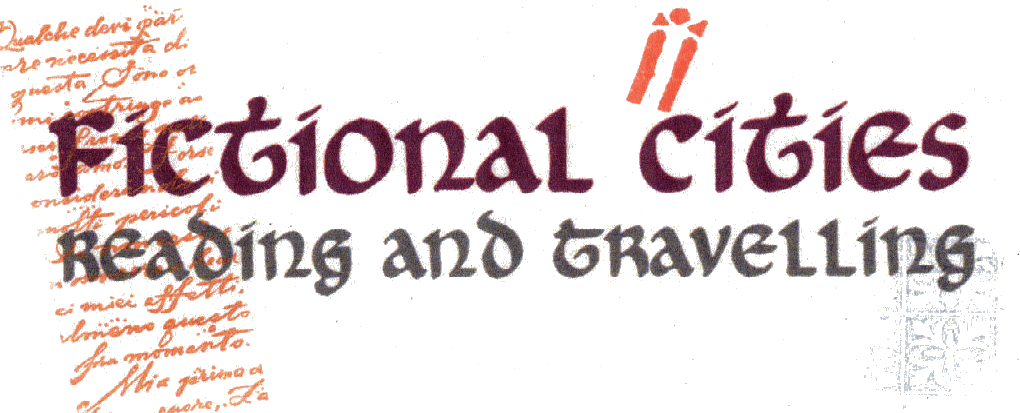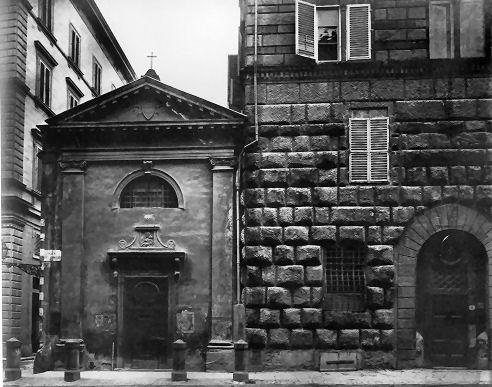|

The lost historic centre
Anyone becoming familiar with the history of Florence can't help but read about
the loss of the old historic centre, comprising the Old Market and the Old
Ghetto, in the late 19th century - it's one of the
big events in the city's history and, along with WWII and the flood, one of the
few such events in recent centuries. I've read about it often, but until recently
it was just the sad fact that explained the boring modernity of the Piazza della
Repubblica. Now with the finding of two books, both in Italian, I'm
beginning to appreciate just what was lost, and how big an area was levelled -
the four corners of the area roughly being the Duomo, the Piazza della Signoria,
Palazzo Strozzi and Santa Maria Maggiore.
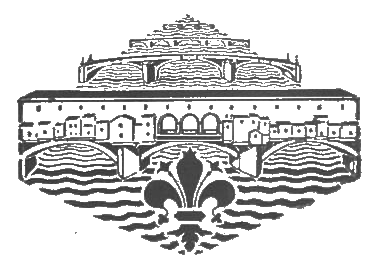 |
|
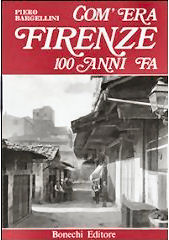
|
|
Com'era Firenze
Cento anni fa
by Piero Bargellini
€12.90
The first book I found, picked up in a bookshop in Florence, is a
collection of photos of old Florence, with a few photos of the lost
centre to whet one's appetite for... |
|
Firenze 1892-1895
Immagini dell'antico centro scomparso
by Maria Sframeli
€42.00
Which I found in the London Library and just had to own - I got it
for €35.70 from Amazon.it. It's full of fine and heartbreaking
photographs of what was lost, and includes a map showing where each
photograph was taken.
The excuse of slum-clearance was used, as
ever, and there may be some truth in this. But leaving aside such
unromantic considerations for a minute, let's wallow.
|
|
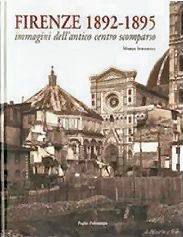 |
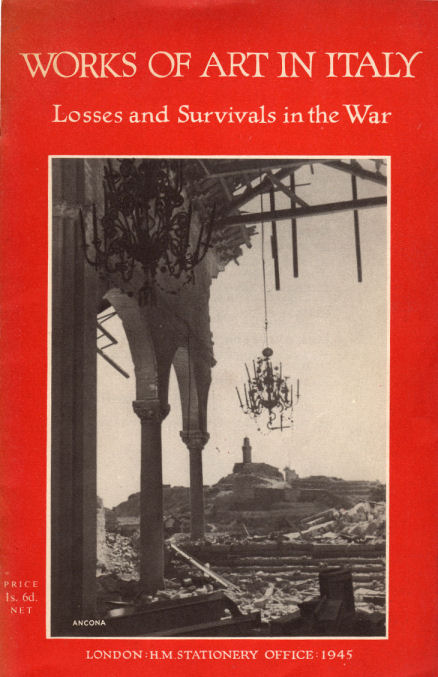 |
|
Works of Art in Italy
Losses and Survivals in the War
Part 1- South of Bologna
HMSO 1945 1s. 6d.
Compiled from War Office reports
and published in 1945, this is a thin paperback containing an alphabetic
listing of cities and towns in Italy up as far as Bologna, with reports
on damage and destruction, or the lack of it, at these sites. The
reports are mostly the likes of 'suffered some damage' or 'is intact'
but the longer entries, for the Pisa Camposanto and the area around the
Ponte Vecchio in Florence for example, are longs and well written,
concerned and containing some fragrant detail. Like the blowing up of
the Ponte Vecchio having no military value as the space between the
shops was so narrow no lorry could use it, let alone tank. The
description of the fire, and work afterwards, in the Pisa Camposanto is
full of interesting details, and sadness. |
